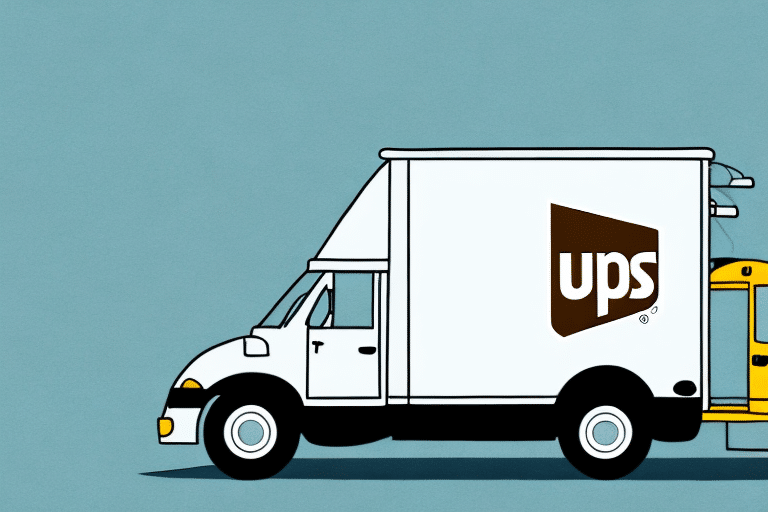Is UPS a Postal Service?
If you're a frequent shipper, you've probably wondered: is UPS a postal service? While the answer may seem straightforward at first glance, comparing UPS to traditional postal services like USPS involves several factors worth exploring.
What is a Postal Service?
A postal service is a government-run organization responsible for handling mail and packages for the public. These services typically include:
- Letter and package delivery
- Sorting and distribution
- Post office box rentals
Postal services have a long history, with the first recorded system dating back to ancient Persia in 550 BC. Over centuries, they've evolved from horseback deliveries to using advanced technology for global mail tracking and delivery. Today, postal services are crucial for connecting individuals and businesses, facilitating communication, and supporting economic growth.
For more detailed information, refer to the United States Postal Service website.
The Evolution of UPS
UPS, originally founded as the American Messenger Company in 1907, started by handling local courier services in Seattle, Washington. Over the years, UPS expanded its operations to include long-distance shipping and comprehensive logistics services.
Today, UPS is a global powerhouse offering a wide range of shipping options from same-day delivery to international logistics. The company's commitment to sustainability is evident through initiatives like alternative fuel vehicles, energy-efficient facilities, and carbon offset programs, with a goal to achieve carbon neutrality by 2050.
UPS also emphasizes social responsibility, partnering with organizations to support education, disaster relief, and community initiatives.
Learn more about UPS's history and initiatives on their official website.
Comparing UPS and USPS
Ownership and Funding
The primary difference between UPS and USPS lies in their ownership and funding. USPS is a government-owned entity funded through taxes and postage fees, ensuring universal service across all U.S. addresses. In contrast, UPS is a privately-owned company that generates revenue through shipping fees.
Delivery Options and Coverage
USPS is mandated to deliver to every address in the United States, including rural and remote areas. UPS, however, focuses on major metropolitan areas and may not cover every address. Additionally, UPS offers a broader range of delivery options, such as:
- International shipping
- Expedited shipping services
- Advanced tracking and delivery notifications
USPS primarily targets residential deliveries, while UPS caters to both residential and business needs with specialized services.
Pricing Structures
USPS generally offers more affordable rates for small, lightweight packages, making it ideal for personal shipments. UPS, while sometimes more expensive for smaller packages, provides competitive rates for larger or bulk shipments and offers discounts for high-volume customers.
For detailed pricing comparisons, visit the UPS pricing page and the USPS pricing guide.
Services Offered by UPS and USPS
UPS Services
- Ground Shipping
- Next-Day Air Shipping
- Two-Day Air Shipping
- International Shipping
- Freight Shipping
- Logistics Services
Additional services include UPS My Choice for delivery preferences and UPS Access Point for convenient drop-off and pick-up locations.
Specialized services cater to industries such as healthcare with temperature-controlled shipping and retail with customized logistics solutions.
USPS Services
- First-Class Mail
- Priority Mail
- Express Mail
- International Shipping
- Media Mail
- Certified Mail
USPS also offers specialty services like Hold Mail for temporary mail retention and Informed Delivery, which provides email notifications with images of incoming mail.
Packaging options include free Priority Mail boxes and custom packaging for business needs.
Pricing Comparison of UPS and USPS Services
When choosing between UPS and USPS, pricing is a critical factor influenced by package size, weight, distance, and required delivery speed. Generally:
- USPS is more cost-effective for small, lightweight packages.
- UPS offers better rates for larger, heavier shipments and high-volume business customers.
Both services provide additional options like insurance and tracking, which may incur extra fees. It's advisable to compare rates based on your specific shipping needs using the official pricing calculators:
Choosing Between UPS and USPS for Your Shipping Needs
Deciding between UPS and USPS depends on several factors:
- Package Size and Weight: USPS for smaller packages, UPS for larger ones.
- Delivery Speed: UPS for expedited services.
- Destination: USPS for universal coverage, UPS for specific areas.
- Budget: USPS generally more affordable for personal shipments.
- Service Level: UPS offers advanced tracking and specialized services.
Consider the nature of your shipment and your priorities when making a choice. For business needs, UPS's logistics and bulk shipping options might be more suitable, while USPS caters well to individual and small business shipping.
Pros and Cons of Using UPS and USPS
UPS
- Pros:
- Wide range of shipping options
- Advanced tracking and delivery notifications
- Specialized services for various industries
- Global shipping capabilities
- Cons:
- Higher costs for small packages
- Limited coverage in rural areas
- Requires setting up a separate shipping account
USPS
- Pros:
- Affordable rates for small, lightweight packages
- Universal delivery coverage
- No need for a separate account
- Variety of specialized mailing options
- Cons:
- Longer delivery times for some services
- Limited tracking compared to UPS
- Extra fees for certain services
The Impact of E-commerce on the Shipping Industry
The surge in e-commerce has significantly transformed the shipping landscape. Increased online shopping has driven demand for reliable, fast shipping services, leading to:
- Enhanced competition among shipping providers
- Innovation in delivery methods, including drones and autonomous vehicles
- Improved packaging solutions to protect products during transit
- Expansion of logistics infrastructure to handle higher volumes
Both UPS and USPS have adapted by expanding their parcel delivery services and investing in new technologies to meet the growing demands of e-commerce. For instance, UPS has explored drone deliveries, while USPS has enhanced its online tracking capabilities.
According to the Statista report, global e-commerce sales are projected to reach $6.54 trillion by 2023, underscoring the critical role of shipping companies in facilitating this growth.
The Future of Shipping: What to Expect from UPS and USPS
As the shipping industry evolves, both UPS and USPS are poised to implement several advancements:
- Sustainability: Increased use of eco-friendly packaging and alternative fuel vehicles.
- Automation: Greater reliance on robotics and AI for sorting and delivery processes.
- Innovative Delivery Methods: Expansion of drone deliveries and autonomous vehicles.
- Same-Day and On-Demand Services: Enhanced options for rapid delivery to meet consumer expectations.
These trends are likely to improve efficiency, reduce environmental impact, and provide customers with faster, more reliable shipping options.
Tips for Efficiently Using UPS or USPS Services
To ensure smooth and cost-effective shipping, consider the following tips:
- Use Quality Packaging: Invest in sturdy materials to protect your items during transit.
- Select the Right Service Level: Choose a shipping option that balances cost and delivery speed based on your needs.
- Utilize Tracking and Notifications: Keep an eye on your shipments to address any delays promptly.
- Compare Rates: Always check and compare rates between UPS and USPS to find the best deal.
- Take Advantage of Discounts: Look for bulk shipping discounts or business accounts that offer savings.
By following these practices, you can enhance the efficiency and reliability of your shipping experience, whether you choose UPS or USPS.
Conclusion
While UPS is not a traditional postal service, it offers a range of similar services with added benefits that may make it an attractive alternative for certain shipping needs. When comparing UPS to USPS, consider factors such as pricing, coverage, service options, and your specific shipping requirements to make an informed decision. Both companies have their strengths, and with careful planning, you can ensure your packages are delivered safely and effectively.






















